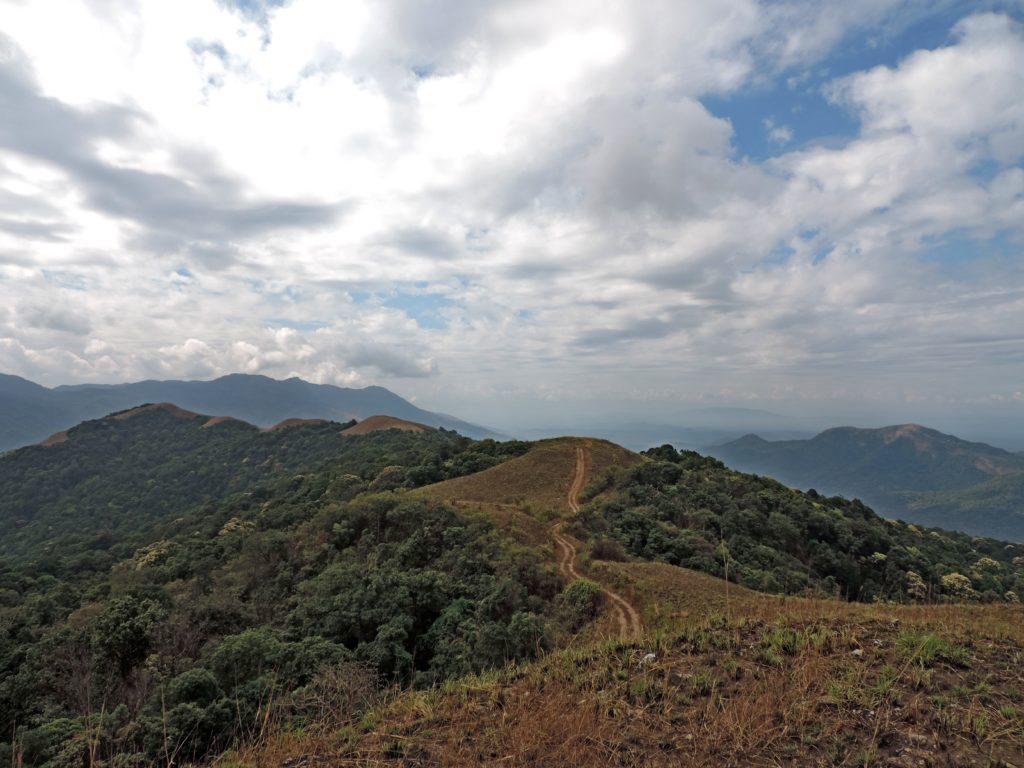By Green Minute News
Although the National Highway Authority of India (NHAI) has dropped the controversial Shishila-Byrapura (SB) road project (NH-173) which was cutting across Western Ghats in Chikkamagaluru district, researchers outline its serious consequences and propose an alternative alignment in the interest of the people. The SB road project was part of the Bharatmala project connecting Chitradurga to Mangaluru.
A new research study has proposed an alternative alignment which can include existing roads that the NHAI is already upgrading and this can almost trace the proposed highway. Researchers have brought out the serious ecological consequences of the SB project resulting in fragmentation of reserve forests, destruction of river catchment areas and existing wildlife corridors in the Western Ghats.

The research study was carried out by H S Sathya Chandra Sagar, Conservation Scientist and Field Biologist (University of Wisconsin-Madison) and Mrunmayee, Conservationist (University of Cambridge) and their research paper has been published in the Journal of Threatened Taxa.
The new alignment suggested traces the route through Nelliyadi-Sakleshpur-Belur-Chikkamagaluru- Chitradurga. If this alignment is adopted, it can halt the environmental and socio-economic consequences. The SB road project was set across contiguous forest patches of central Western Ghats – a biodiversity hotspot and a UNESCO World Heritage Site and it was opposed by both forest officials and conservationists.
SUITABLE ALIGNMENT
Researchers add. “This alignment would be suitable as it is parallel to two existing highways while most other roads between Bantwal-Chitradurga are already being widened and upgraded to national highways. There is no requirement for a parallel and a new 6-lane highway between Mudigere and Nelliyadi through the old-growth and sensitive forests. There are suitable alternatives with significantly lower impacts and so, we strongly urge the Centre to re-examine this issue.”
Collating official documents, literature review and GIS mapping, the study outlines the possible environmental and socio-economic impacts caused by the proposed 6-lane national highway (NH 173). Out of the 233 KM stretch between Chitradurga-Mangaluru, the 68.9 km stretch between Mudigere and Nelliyadi has no existing highway in the alignment. So, the project was to connect this stretch which has no motorable road between Byrapura village near Mudigere and Shishila village near Nelliyadi.
ECOLOGICAL DAMAGES
The study says it was set to pass through low elevation evergreen forests in central Western Ghats between Mudigere and Nelliyadi towns of Chikkamagaluru and Dakshin Kannada districts respectively. This would have caused maximum ecological damages due to fragmentation of seven reserve forests, destruction of the catchment area of Nethravathi and other rivers and also destroyed the existing elephant corridors in the Western Ghats. The SB road proposal also cuts through many villages with high human-elephant conflict. On completion, it would have led to an increase in human-wildlife conflicts in the region.
Further, it would have fragmented a contiguous stretch of forest (RF) that connects Bhadra Tiger Reserve, Kudremukh National Park and Pushpagiri Wildlife Sanctuary. Building a 30 m wide highway with crash barriers and other road safety features would have acted as blockades for movement and seasonal migration of wildlife. The area between Mudigere and Nelliyadi lies in a region susceptible to landslides. So, any construction work would worsen the susceptibility and damage the water catchment of the Nethravathi river system.
ELEPHANT MOVEMENT
According to their studies, these areas hold one of the highest populations of Asiatic Elephants and are also identified as an important Tiger corridor. Along with these charismatic and threatened mega-fauna, the reserve forests are home to birds, reptiles and mammals that are listed under Schedule I and II of Wildlife (Protection) Act 1972. With high speeding vehicles on SB road, it would disrupt elephant movement and also worsen the existing acute conflict in the region. This threatens the safety of both the local community and wildlife.
Moreover, a four-year long process of constructing a 70 km highway through the heavy forested landscape using earthmovers and blasting machinery by itself, may permanently damage the area and disrupt wildlife movement, the study concludes.
================================

